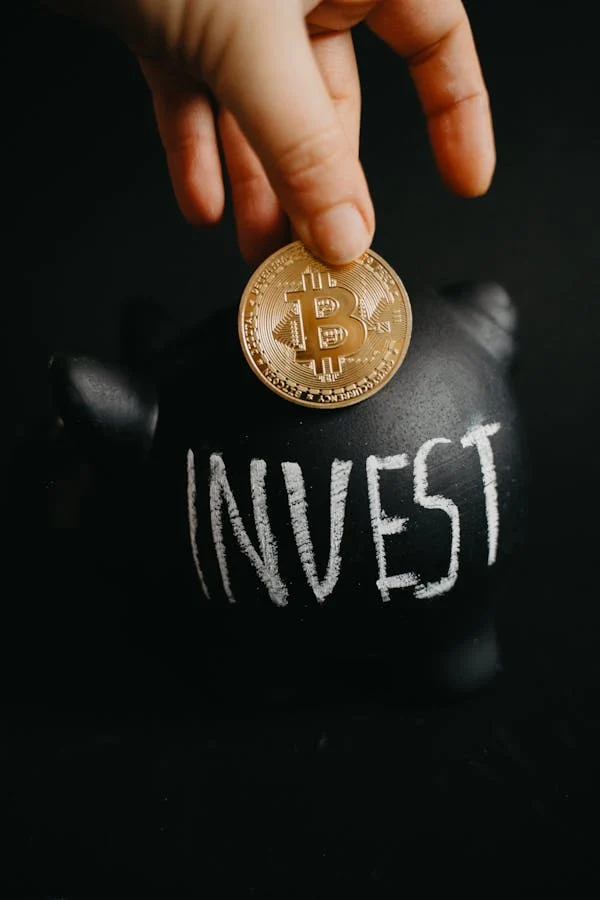|
Getting your Trinity Audio player ready...
|
Navigating financial uncertainty in 2025 feels like trying to solve a puzzle with constantly shifting parts. Millennials and Gen Z have particular difficulties given rising housing prices, artificial intelligence transforming sectors, and inflation still felt following the pandemic, but also unheard-of opportunities.
Imagine using compound interest to turn 100 a month into 100,000 or using a side business to pay off debt and finance your ideal travel. This is reality for smart young Americans using automated savings, ESG investing, and AI-powered gigs to create wealth in challenging times, not a fantasy.
One golden rule that top billionaires like Warren Buffett swear by is to start early. Stanford University studies show that millennials who save just 10% of their income by age 25 are three times more likely to retire comfortably.
Still, 44% of Generation Z admits they have no idea where to start. The fix is to combine knowledge of finances with practical plans. Apps like Acorns, for example, automatically micro-invest, while high-yield savings accounts provide 4-5% APY—far more than standard banks.
Savings by themselves, though, are insufficient. Ten percent of Generation Z already save fifty percent of their income, and the FIRE movement—Financial Independence, Retire Early—is gathering steam.

Match this with ideas for a side project. 2025 opens passive income sources that work while you sleep, much as AI-driven content creation or print-on-demand companies do.
This blog explores tax-saving techniques specifically for digital natives, credit score tricks, and the basics of emergency funds. 2025 is your year to rewrite the rules, whether you’re a gig worker looking at real estate syndication or a college graduate learning loud budgeting. One wise step at a time, let financial stress become empowerment.
Establishing a strong basis for savings
Create a three to six-month emergency fund
Your financial shock-absorbing tool is an emergency fund. Invest in a high-yield savings account for three to six months’ worth of necessary expenses. Even if you start small—$25 a week—it accumulates:
- Automate movements. Plan weekly or bi-monthly auto transfers to a separate savings account.
- Opt for high APY. Look for online banks to increase your buffer more quickly with over 4% APY.
Mastery of Zero-Based Systems or 50/30/20 budgets

- 50% on needs, 30% on wants, 20% on debt repayment or savings.
- Zero-Based Budgeting—the You Need A Budget approach. Every dollar serves a purpose—provoking complete control.
Suggested Apps: Empower for net worth tracking; YNAB for hands-on budgeting; Every Dollar for Ramsey’s zero-based system
Smart Investing Techniques
Time in the Market Beats Timing the Market: Why
- Compound power: Starting early is quite important since a $5,000 investment at age 25, earning 7% annually, can increase to over $76,000 by age 65.
- Low cost, diversified exposure to the S&P 500 or total market indices makes Index Funds & ETFs top investment vehicles for 2025.
Robo Advisors: Automated portfolios rebalancing and tax optimizing for your situation. Our best selections for 2025:
- Acorns (microinvest spare change),
- Wealthfront (tax loss harvesting, tailored planning), o Betterment (goal based strategies, cash management)
- Retirement Savings Accounts: Maximize your employer-matched 401(k) contributions; think about a Roth IRA for tax-free growth.
- Dollar Cost Averaging & Automated Contributions: To help to level market volatility, automatically make monthly transfers into investments.
Side Projects for Additional Revenue

With 65% of Millennials and Gen Z intending to keep their entrepreneurial activities active into 2025, most of them intend to either start or keep side projects. Here are high-impact concepts:
- On sites like Upwork or Fiverr, freelance digital services, including graphic design, copywriting, or social media management
- Through Pickle or Yoodlize, rent tools, electronics, or even clothes, earning up to $3,000 a month.
- Create mini courses on Teach English or math online; tutor English or math online.
- Monetize YouTube channels, blogs, or TikHub by means of affiliate links and sponsorships.
- Services in great demand include specialized gigs, o pet sitting, home repair, or event staffing.
Income Possibilities: Forty percent of Millennials say their side project brings at least half of their monthly income.
Making Use of Tools and Technologies
Top in Class Budgeting and Financial Tools
- Simplifi: Quicken for household chores
- Pocket Guard: Basic financial understanding
- Mint: Free auto sync for every account.
- Digit & Qapital: Consolidate automated savings.
Financial Advice Driven by Artificial Intelligence

Avoid upsells in AI apps such as Cleo AI and Bright; they can drive debt products even with useful budgeting tools.
Notes from Financial Gurus and Top Billionaires
Warren Buffett advises, “Do not save what is left after spending; spend what is left after saving.” © From every pay, automatically save twenty percent.
Ramit Sethi: Promote “conscious spending,” noting your money magnificers and slashing mercilessly the rest.
Elon Musk: Treat side business income as seed money for your next project; reinvest profits aggressively.
Financial Resources and Education
1. Online Courses: Yale’s “Financial Markets,” Coursera’s “Personal & Family Financial Planning,” University of Florida
2. Books: I Will Teach You To Be Rich by Ramit Sethi; The Simple Path to Wealth by JL Collins.
3.Podcasts covering choice and balance, stack and flow.
Plan of Action for Thirty Days
1. Set up auto transfers and open high-yield savings in week one.
2. Choose and install a budgeting app; create your zero-based budget in the second week.
3. Research and fund a low-cost index fund or robo adviser in week three.
4. Week 4: Choose one side project; draft a rudimentary business plan and start a profile.

Success Story
Mia Khan first logged into the portal of her student loan servicer at twenty-three. The balance turned back at her: $48,632—a sum so great it seemed impossible to control. Just $32,000 a year as a junior UX designer fresh out of college in Detroit, she questioned whether she would ever be able to escape the red ink of borrowed tuition.
Mia’s parents had taught her growing up a straightforward motto: “Live within your means—but dream far beyond them.” But Mia found herself deciding between groceries and paying down interest as rents skyrocketed and entry-level wages stayed the same.
Of her pay, rent took thirty percent; utilities, transportation, and groceries ate another forty percent. Saving seemed like a luxury unaffordable for her.
Feeling almost burned out, one cold January evening, Mia came upon a podcast episode on “conscious spending” by Ramit Sethi. She learned to spot her non-negotiables—morning lattes and weekend brunches with friends—and mercilessly cut everything else instead of eliminating every bit of happiness.
She promised a “latte tax” of $5 per drink, then turned that money toward her smallest loan tranche. Vowing never to touch a $50 monthly transfer into a high-yield “rainy day” account, she automated it.
Inspired, Mia set a big target: pay off the highest interest loan in a year. On the side, she took freelancing UI jobs paying $25 an hour and committed every additional dollar to debt.
She had made an extra $6,000 in six months, enough to pay off the first loan and roll that money into the second. Every “victory” stoked her will and transformed fear into empowerment.
The true breakthrough, though, came when Mia joined a web community for young savers and investors. She discovered there were responsible partners who celebrated every milestone, traded financial tips, and provided encouragement on trying days.
The group rallied when she came upon an unanticipated car repair bill: one member lent her $200 interest-free, and another revealed a coupon stacking technique that saved her $75 at the auto parts store.
Mia had paid off all $48,632 by her twenty-five birthday and even created a three-month emergency fund with almost $10,000 stashed in her savings account.
More than any count, it was the confidence that transformed her life. She came to see that financial freedom was about clarity, community, and consistent behavior rather than austerity.
Mia uses a low-cost robo advisor today to invest $200 a month into a total market ETF. Paying back the knowledge she gained, she conducts side hustling and budgeting seminars.
Friends wonder at her change: “You’ve done what seemed impossible,” they say. Mia smiles, knowing that, should she be able, so can you. She remembers the anxiety that once paralyzed her.
Frequently Asked Questions
1. At an entry-level salary, how much should I try to save each month?
Save 20% of your take-home income—10% for an emergency fund and another 10% for long-term plans like debt payback or retirement. That automatically saves $600 on a $3,000 monthly salary.
Start with 5–10% and increase as you earn raises or lower expenses if 20% initially feels unreachable. Automating transfers the day following payday guarantees that you “pay yourself first,” so preventing the loss of the money you intend to save.
Review your budget once more quarterly; change your percentages depending on cost fluctuations, but maintain the non-negotiable savings habit.
2. How can beginners start investing with little money in the simplest way?
With as little as $5, micro-investing apps and robo-advisers simplify investing. Acorns gathers every purchase to the closest dollar and invests the spare change in diversified ETF portfolios.
Betterment and Wealthfront let you create objectives like “retirement” or “vacation,” then automatically rebalance your assets to keep on target.
The secret is consistency; time in the market allows even $50 a month compounded at an average 7% annual return to increase significantly over decades. Start right now; wait to “have enough”.
3. Which side project should I pick to avoid burnout?
First, name your passions and strongest suit. If you enjoy writing, freelancing on Upwork or Fiverr could pay $30–$50 per hour. If you are tech-savvy, social media management or website design could be quite profitable.
Track your overall work hours to prevent overload and set limits on side hobby hours—that is, evenings or weekends.
To reduce travel stress, look for events with remote choices and flexible deadlines. At last, test small—take on one client for a month before expanding—so you find whether the additional work energizes or saps you.
4. How might I pay off high-interest debt more quickly?
Give the debt avalanche or snowball techniques top attention. While the avalanche targets the highest interest rate, saving money on interest payments, the snowball tackles your smallest balance first, gaining quick wins.
Whichever you decide, set aside every extra dollar—bonuses, side gig income, tax refunds—for your intended debt. Automate minimum payments for every loan; then, personally pay the extra to the debt you have selected for “focus.” Eliminating one roll’s payment into the next to produce a compounding payoff effect that advances you more quickly.
5. How best to create an emergency fund without compromising current needs?
Start in a separate high-yield savings account with a modest, reasonable goal, say $500 or one month’s expenses. Even $25–$50 every paycheck, automate a small transfer to feel painless.
See your emergency fund as a kind of regular “bill” to yourself. To augment your fund without personally contributing, use cash back apps or round-up savings tools (such as Qapital).
Increase the transfer amount once you cross your first mark. Presenting it as “peace of mind insurance” will enable you to stick to it even in lean times for budgets.

Final Thoughts
You now stand at the brink of your own story after traveling through Mia’s emotional triumph, discovering exact answers to the five financial questions most likely to arise for Millennials and Gen Z, and now know that Recall: financial freedom is a set of daily intentional actions rather than a far-off dream.
Automate your savings, embrace consistent investing, pick side projects that fit your interests, and use community support when you most need it.
Your next steps action plan is here:
- Set up an automatic $50 weekly transfer to a new high-yield savings account today.
- Choose one micro-investing app or robo adviser this week and fund at least $20.
- This Month: Create your first side hustle profile on a gig platform or contact three possible freelancers.
- This quarter, either completely pay off one small debt fragment or raise your retirement contribution by 1%.














